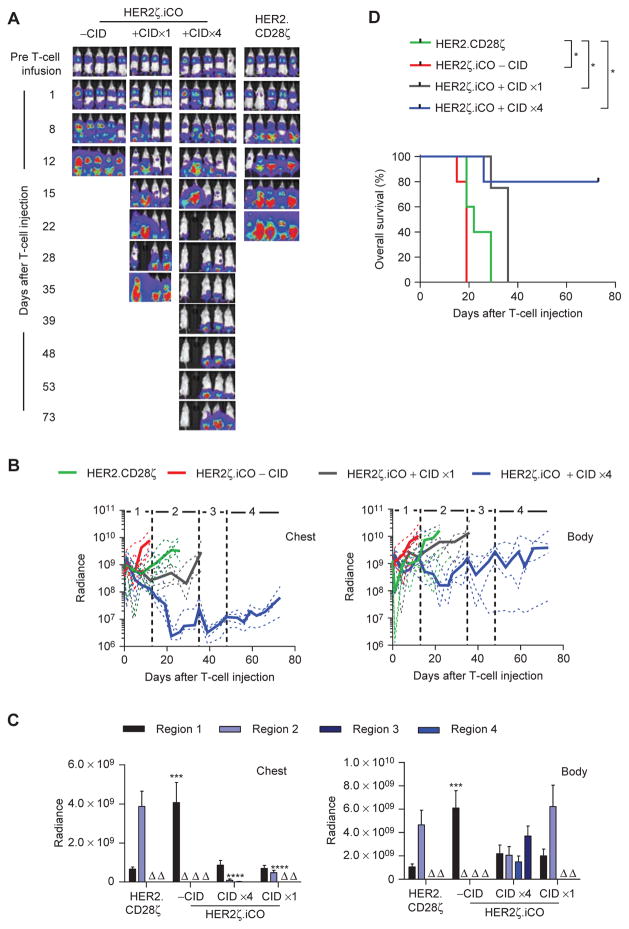Figure 7.
Multiple doses of CID improve the antitumor activity of HER2ζ.iCO T cells in vivo. A549.eGFP.ffluc cells (2 × 106) were injected into NSG mice intravenously. On day 7, 3 × 105 HER2ζ.iCO or HER2.CD28ζ T cells were injected intravenously. Mice were injected with one dose of CID (100 μg) or vehicle control intraperitoneally (−CID) on the same day of T-cell injection. One group of HER2ζ.iCO + CID T-cell mice received three additional doses of CID intraperitoneally (days 13, 35, and 48 after T-cell injection). Bioluminescence imaging was used to follow tumor growth in mice. A, Images of representative animals are shown. B, Bioluminescence signal (radiance = photons/sec/cm2/sr). Dashed lines, individual mouse; solid lines, median. Regions of graph correspond to CID injections as follows: region 1, T-cell and CID injection #1; region 2, CID injection #2; region 3, CID injection #3; region 4, CID injection #4. C, Pooled bioluminescence data for each region (mean + SEM; Δ, all mice euthanized; ***, P < 0.001; ****, P < 0.0001; one-way ANOVA). D, Kaplan–Meier survival curve of HER2ζ.iCO T cells + CIDx1 (n = 4), HER2ζ.iCO T cells + CIDx4 (n = 5), HER2ζ.iCO T cells + vehicle control (n = 5), or HER2. CD28ζ T cells (n = 5; *, P < 0.05; log-rank test). All statistical analysis was done compared with HER2.CD28ζ T cells.

